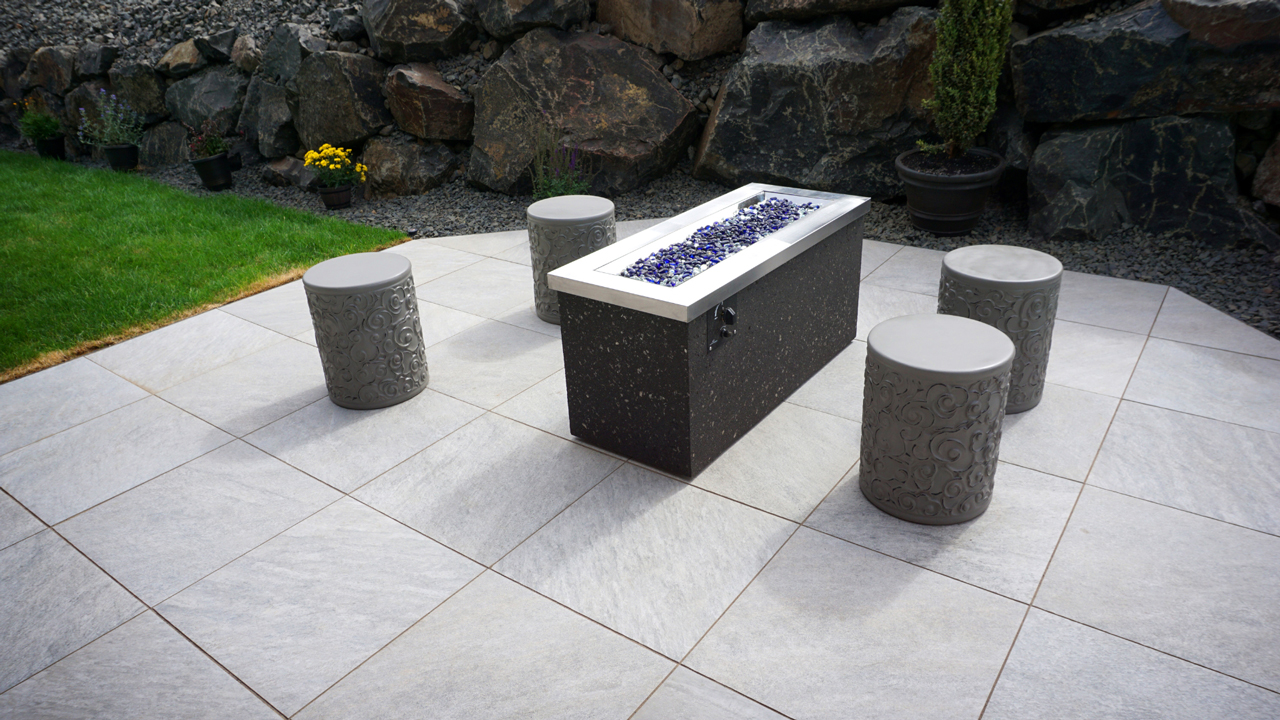
You can create a warm and cozy gathering spot for your guests and yourself all year long with a fire pit in your outdoor area and you'll need to employ the help of trusted hardscape contractors.
Outdoor fire featuresOutdoor fire features include elements such as fire pits, fireplaces, and fire tables, which provide... are not only a great addition to any outdoor living space, but they're also much easier to set up than you might think. Adding them to your outdoor living space will make it a major focal point.
In addition to elevating the space and adding ambiance, these fire features add a further design element to the space, such as a torch, a fire table surrounded by seating, or a large fire bowl on a pedestal. For a fire pit that is both appealing and functional, you should hire a hardscape contractor to help you with design and installation.
This article will help you understand what you need to know about installing a gas fire pit.
Before you can start constructing fire pit projects, you must choose the right parts, dig, install the gas lines, and finally install the fire pit itself. It's important to nail down a few details before building that fire feature of your dreams.
Besides aesthetics, there are other factors to consider. The operation of a fire pit must be conducted responsibly because there is an element of danger involved. To keep your family, friends, property, and yourself safe while enjoying the best fireplace experience, be sure to consider the following factors.
As the first step in creating your outdoor living space, homeowners need to decide where the fire pit will go. You must check your local building regulations to determine where you can place your fire pit in your yard. Space constraints, fuel type, and how you intend to use the fire pit should all be considered when choosing a location for a fire pit.
Whenever fire elements are part of a larger project, one needs to take into account how they will integrate into the overall design of their backyard. Included in this are the site lines of the house and the way the materials work together.
You should ensure that your fire pit has at least six feet of clearance around its sides and above its burner when deciding where it will go. There must be a minimum distance of 20-25 feet between your fire pit and your house or any other combustible structures. It will depend on the size and type of your fire pit burner on how much clearance is required between the fire pit and combustibles.
To ensure safety, make sure the structure is at least 10 feet away from existing structures and from bushes and overhanging trees. Consider your location carefully if you live in an area that is prone to high winds. Select the right location with the help of hardscape contractors.
Fire pits must be placed on flat, levelA level is a tool used to determine whether a surface is horizontal (level) or vertical (plumb). It ... surfaces, such as patiosPatios are outdoor spaces adjacent to a home, typically used for dining, entertaining, or relaxation..., decksDecks are elevated outdoor platforms typically made from wood or composite materials, providing a ve..., or level lawns. In order to prevent radiant heat from transferring to the deck beneath the fire pit, you must choose a fire pit that is approved for installation on combustible surfaces. Bricks, pavers, Hardie Board, and Durock® are among the non-combustible base materials approved for decks.
Stone and stainless steelSteel is a strong, durable alloy made primarily of iron and carbon, commonly used in construction an... are common materials used in fire pits, as well as marbleMarble is a metamorphic rock composed primarily of calcite or dolomite. Renowned for its classic bea... slabs. Your choice of material will play a large role in the cost of your project and your entire landscaping design. You may want to consider stainless steel for an easy-cleaning patio fire pit, though it will be more expensive.
Identifying your fuel type—natural gas or liquid propane—is another important step.
For permanent fire features in outdoor spaces, natural gas is the perfect fuel source. It will be necessary to hire gas experts to run a line to your fire pit. Without the proper training, hooking up one can lead to a fire, serious injury, or death.
In contrast, propane tanks are more portable and require less installation. Gas professionals can run a gas line underground from a propane tank on-site to your fire pit, which makes it a permanent part of your outdoor space, allowing you to enjoy it year-round.
It is imperative that fire pit structures are hollow and have adequate ventilation. Regardless of what kind of fire pit you build, the enclosure must have ventilation. If there isn't enough ventilation—gas and heat could build up inside the enclosure—causing an explosion.
Fire pit enclosures need ventilation to provide fresh air for the ignition system to function properly, to assure continuous airflow, and to prevent gas and heat buildup. It should be ventilated with at least two built-in air vents.
Riser supports can be used to elevate a fire pit off the ground if it does not have an open bottom.
It should be pretty clear by now what is involved in building fire pits and what factors need to be taken into consideration. However, if you have further questions or to ensure you're on the right track, don't hesitate to reach out to reliable hardscape contractors.
Our team will be glad to assist you whenever you need us. We have been providing hardscapingHardscaping refers to the non-living elements of landscaping, such as stone, brick, concrete, wood, ... and landscaping services in Orange County for more than 15 years. As part of our job to make your fire features a safe and cost-efficient one, we want it to be aesthetically pleasing and functional as well.
Visit our website for more details or contact West Hills Masonry at 714-519-5009 for a consultation today!
 Carlos Gonzales
Carlos GonzalesLocations We Serve
Schedule A Consultation